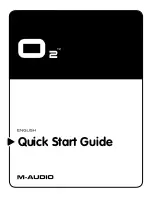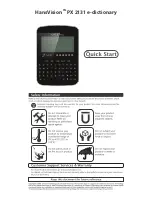
KARMA GE guide
924
1/64, an input velocity of 64 would enter KARMA as
32 (velocities in the range 1–127 are scaled into the
range 1–64, or 50% softer).
Note:
Setting the two values to the same value creates
a constant value, and would be the same as using
“Velocity Mode” =
2: Constant
. For example, setting
the Mode to Average with a range of 64/64 is the same
as Constant with “Velocity Value” = 64.
Randomize Bottom
[–12…+12]
Randomize Top
[–12…+12]
Sets a range of randomization to be applied to each
note’s velocity as it is generated. Note that this can be
used to make the velocity of each note in a cluster
slightly different, while using the Velocity Pattern to
generate random velocities applies to each cluster as a
whole. Useful for more human-sounding effects, with
less machine-like precision.
Pattern Grid & Associated Parameters
Velocity Pattern
A Velocity Pattern has any number of steps up to 32,
with each step being represented by one column on the
grid. The first column always contains at least one
value; unused columns appear disabled. From the top,
the 16 rows represent increasing amounts of velocity
offsets to be subtracted from the Initial Velocity of the
input notes (as determined by the Velocity Mode). It is
important to note that the reason the pattern operates
with negative, subtractive values rather than absolute
positive values is so that it can be applied to the actual
initial velocities of the input source material, thereby
superimposing a pattern of accents while not
destroying already existing velocity nuances (if
desired).
Pattern grids cannot be viewed or edited on the
OASYS.
Random Weighting Parameters
The Random Weighting Parameters are made available
when at least one step (column) in the Velocity Pattern
has multiple values selected (constituting a “random
pool” of values).
p.911 “Rhythm Group”: “Random Weighting
Pools-Random Factor
[99…+99]
p.911 “Rhythm Group”: “Pools-Random Factor”
Pools-Weighting Curve
[0…3]
For more information, see “Rhythm Group” on
page 909, “Pools-Weighting Curve” on page 911, and
“Random Weighting Curves” on page 961.
The following table summarizes the effect of the
various Weighting Curves and the Factor field on the
choices from the Velocity Pools:
Cluster Mode
[0, 1]
0: Single-1 Step Per Cluster
Each time a note, cluster of notes, or group of drum
notes is generated one Velocity Pattern Value will be
chosen for the current step, after which the Velocity
Pattern advances to the next step. For example, a
cluster of six notes will all be generated with the same
velocity and advance the Velocity Pattern by one to the
next step. This is useful for creating very noticeable
“accented patterns” within effects using large clusters
of notes such as gated techno effects.
1: Multi-1 Step For Each Note In Cluster
For every note in a cluster or group of drum notes
generated simultaneously, a separate Velocity Pattern
Value will be chosen after which the Velocity Pattern
advances to the next value. For example, a cluster of
six notes will be generated with the next six Velocities
0: Exponential
2: Exp-S
1: Logarithmic
3: Log-S
Velocities that receive priority:
Weighting
Curve
Factor
+ (positive)
– (negative)
Exp/Log
louder
softer
Exp-S/Log-S
middle
louder/softer
Содержание Electronic Keyboard
Страница 1: ...Parameter Guide Parameter Guide ...
Страница 2: ......
Страница 180: ...Program mode EXi 170 ...
Страница 290: ...EXi STR 1 Plucked String 280 ...
Страница 572: ...Sequencer mode 562 ...
Страница 700: ...Global mode 690 ...
Страница 751: ...Insert Effects IFX1 IFX12 Routing 741 Fig 2 3a Fig 2 3b ...
Страница 902: ...Effect Guide 892 ...
















































